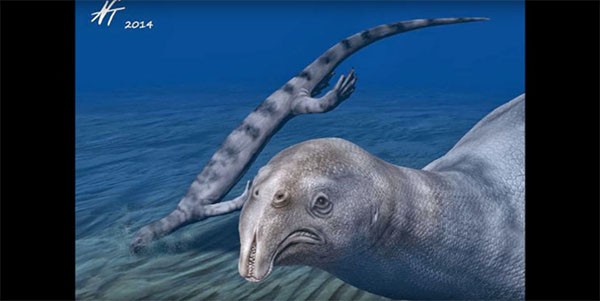Research on a new fossil found in China has revealed the true nature of a marine reptile called the Atopodentatus unicus. Researchers used clay to make a model of the jaw to reveal how it fed.
According to the study published on Science Advances, the true nature of the 244 million year old marine reptile was a plant-eating creature. The researchers have also revealed that this is the earliest known herbivore marine reptile to date. They also added that the new fossil suggested that it had a hammerhead skull with two different sets of teeth that allowed it to eat on underwater plants.
Field Museum co-researcher Olivier Rieppel revealed to BBC that the research team used clay to make a model of the jaw to reveal how the reptile ate. The teeth were rebuilt with toothpicks, and they looked at how the upper and lower jaw locked together. He added that the discovery of the reptile can also help in finding out what really happened on the world's largest mass extinction 252 million years ago.
The new fossil was found in Luoping County in the Yunnan province of China. The new findings of this sea-dwelling reptile have now overthrown previous conclusions of the creature, which was first reported in 2014. The old research claimed that the creature had a drooping snout with a set of teeth that looked like a zipper in arrangement, and that led the previous researchers to conclude that it used its mouth to dig up around the seabed to eat some invertebrates.
The new research revealed that the hammerhead skull had a lot of chisel-shaped teeth along the top, and bottom parts of its mouth were used to scrape plants and algae off the seabed. After the scraping process, the plants floated up and were suspended in the water, which were sucked by the marine reptile afterwards. The water was pushed out, but the plants remained behind with the help of the teeth that acted as a filter.
The name of the marine reptile still lives up to it, which is translated as the bizarre, unique formation or arrangement of teeth. Research co-author Nick Fraser said in a statement that the creature is more bizarre now with the new discovery of its true nature, and how it feeds.
Check out the previous depiction of the marine reptile's video below:



























